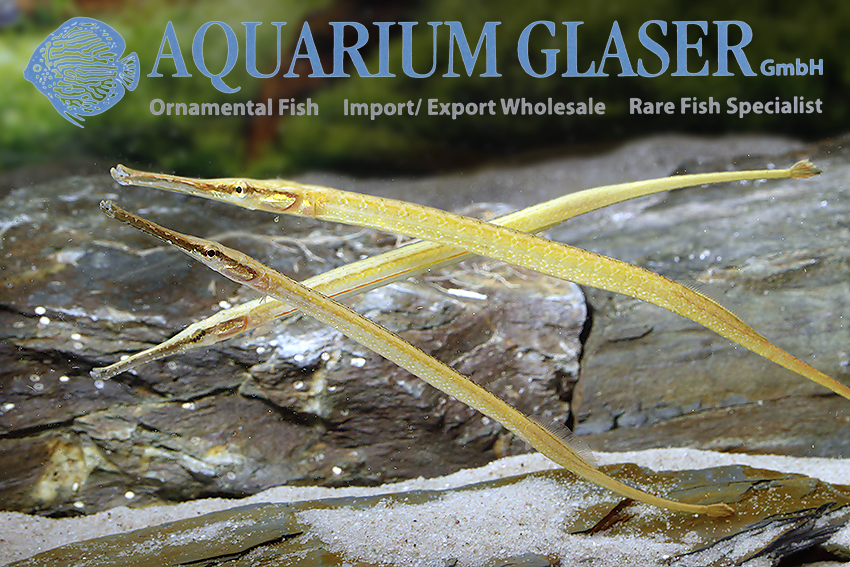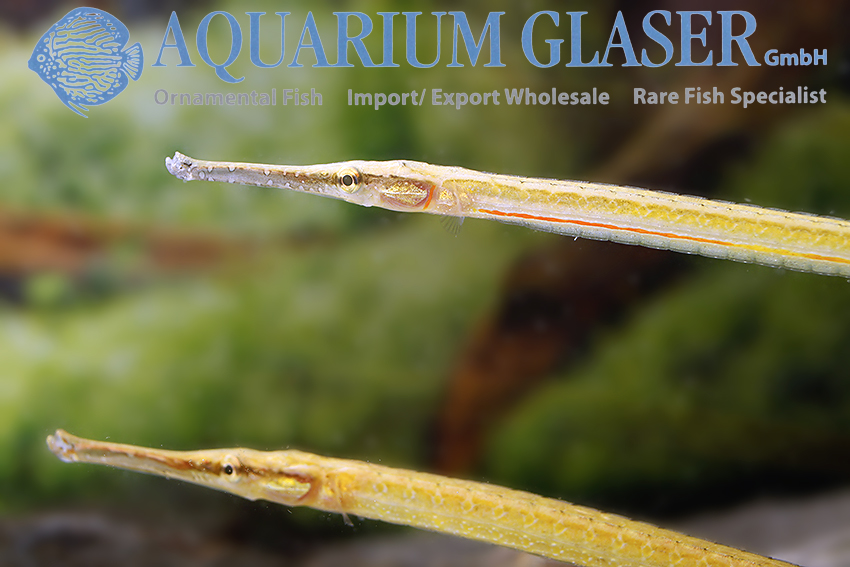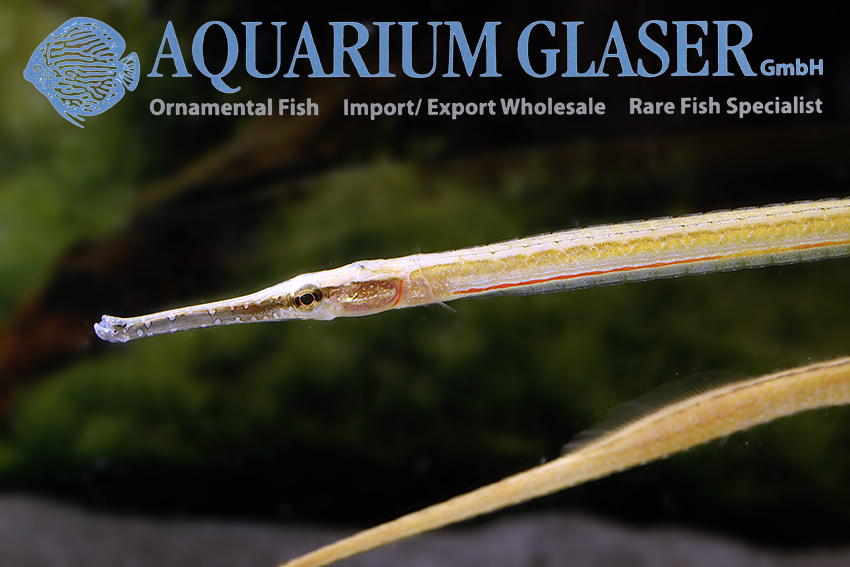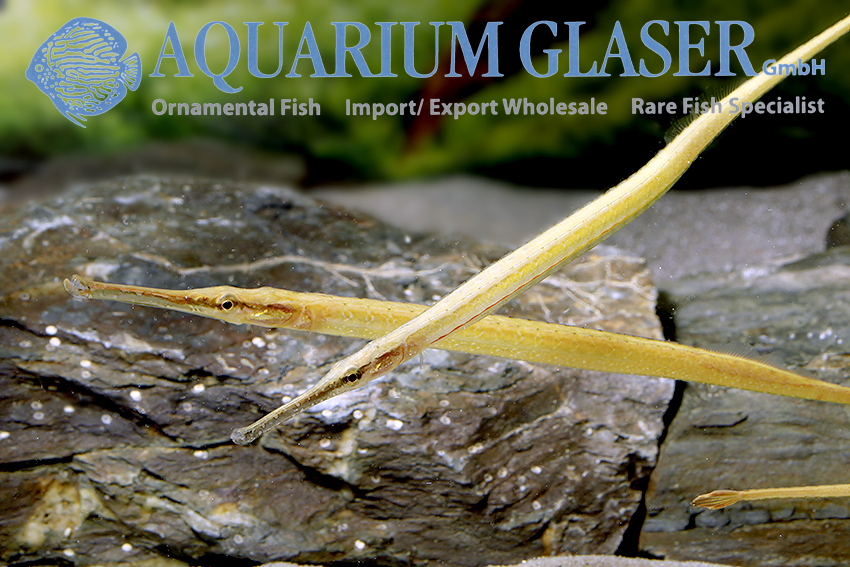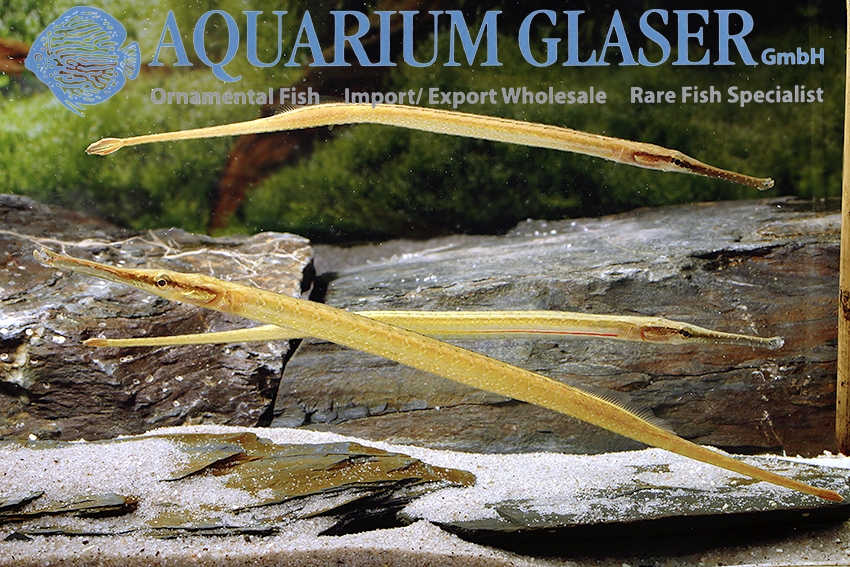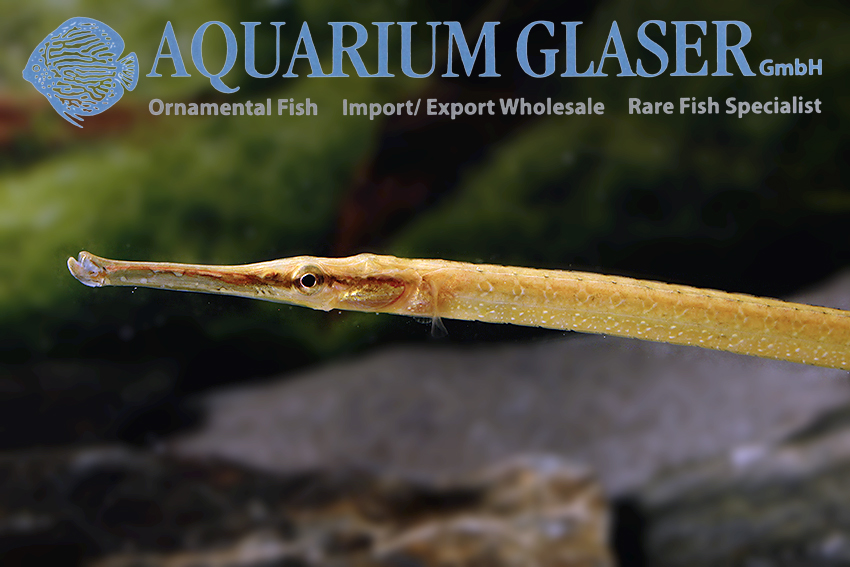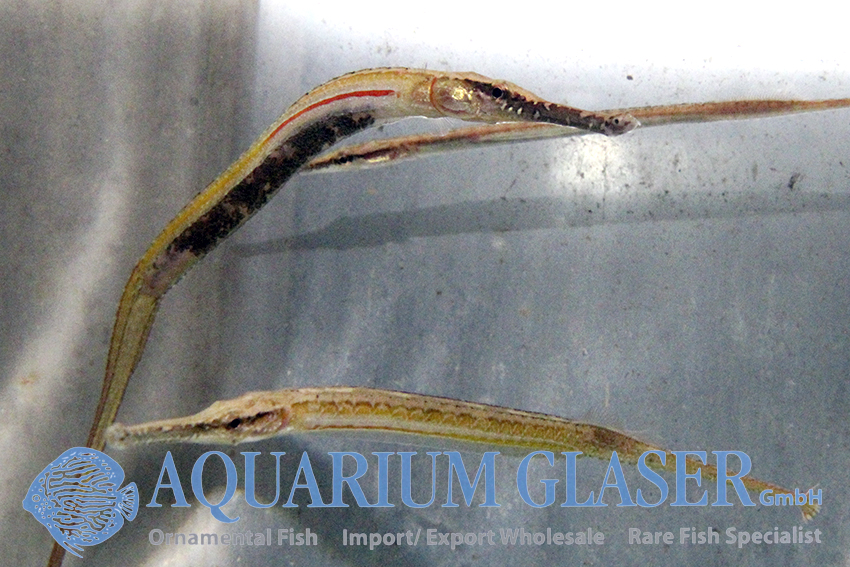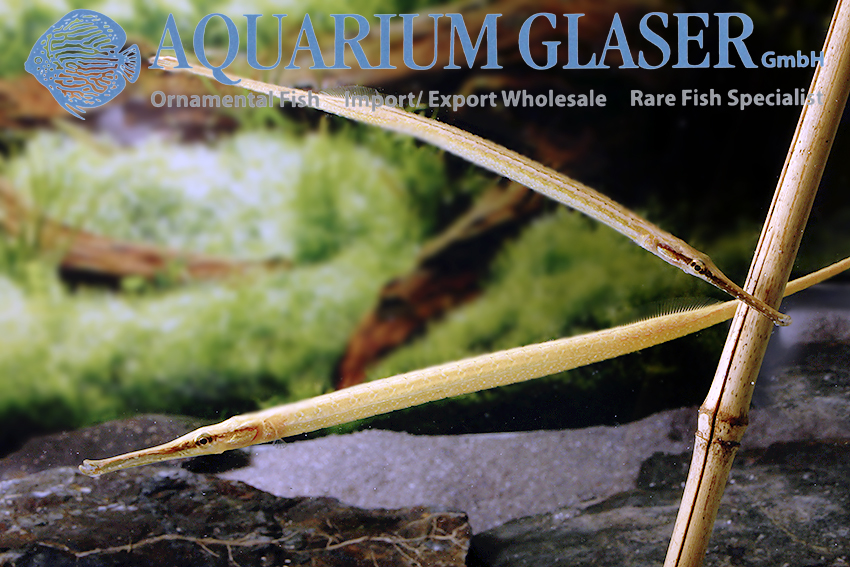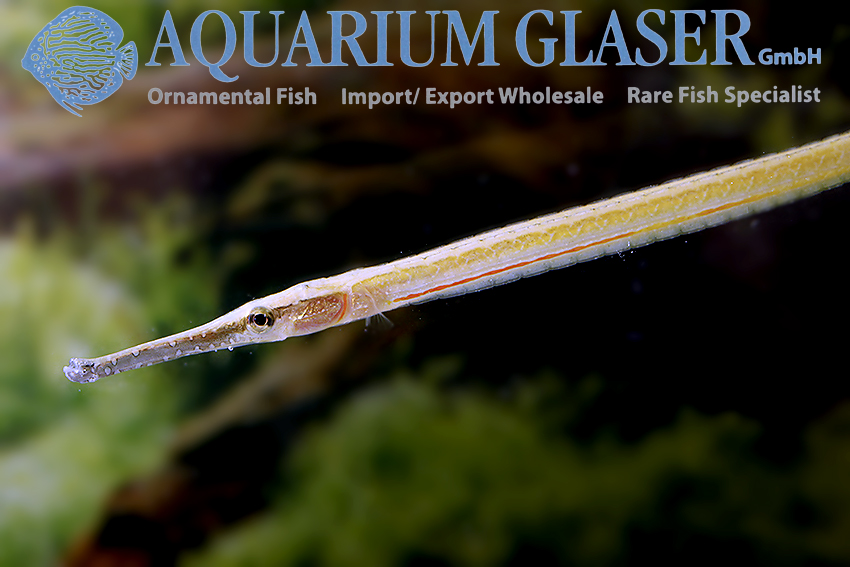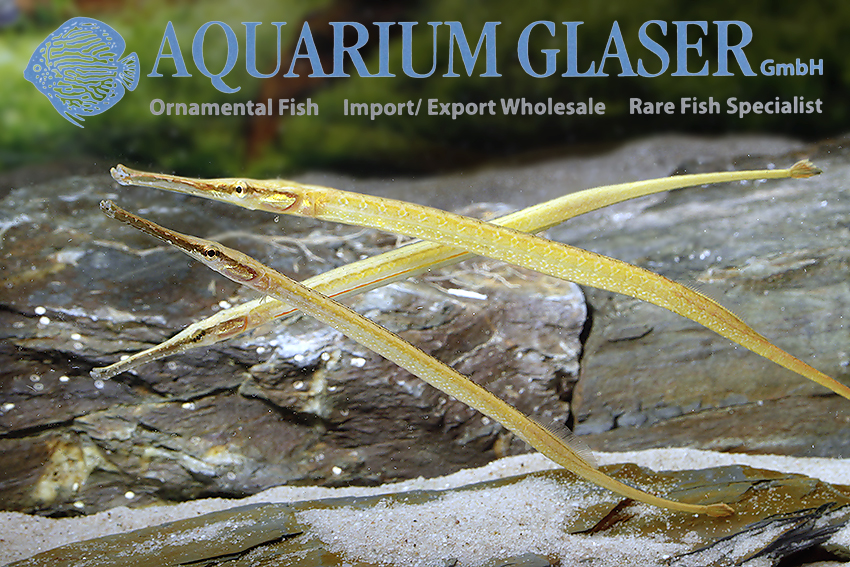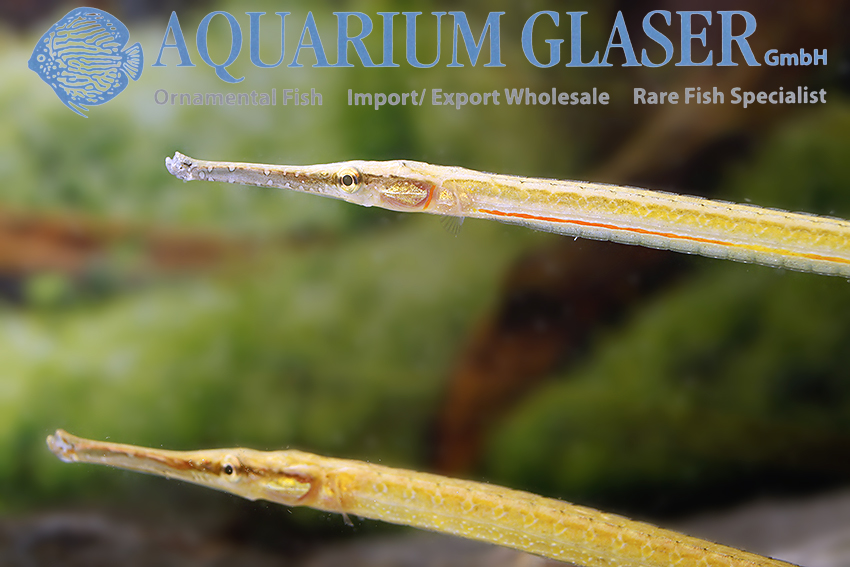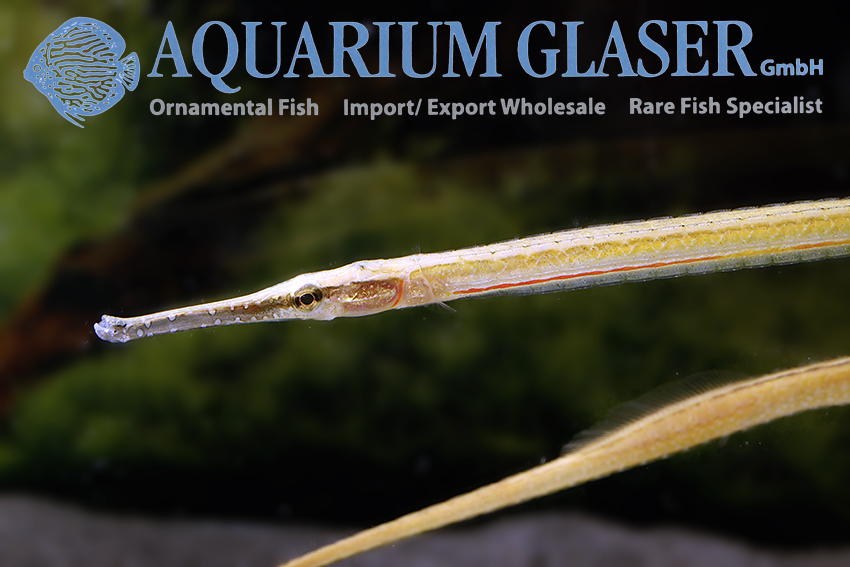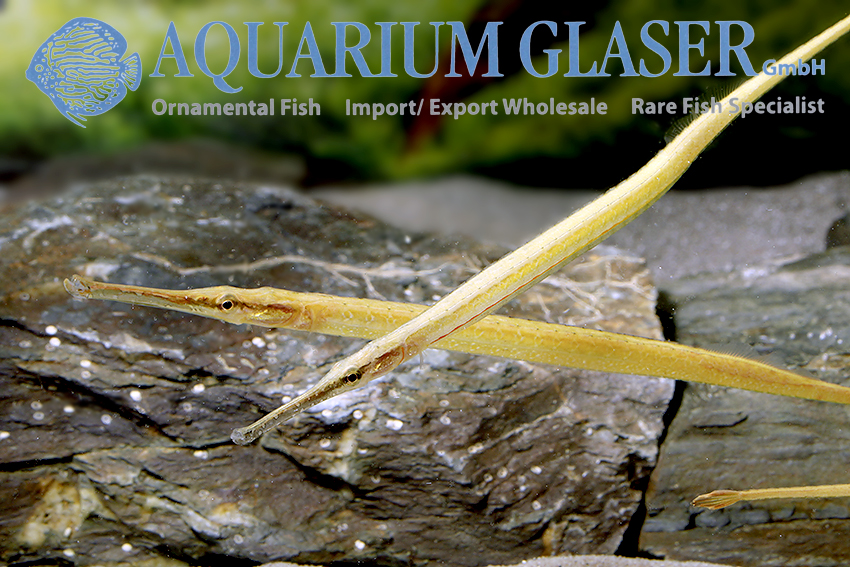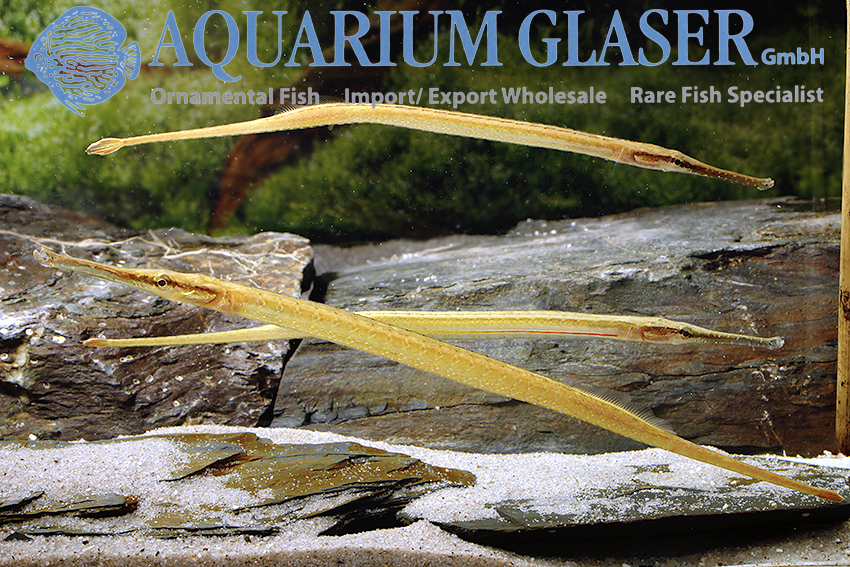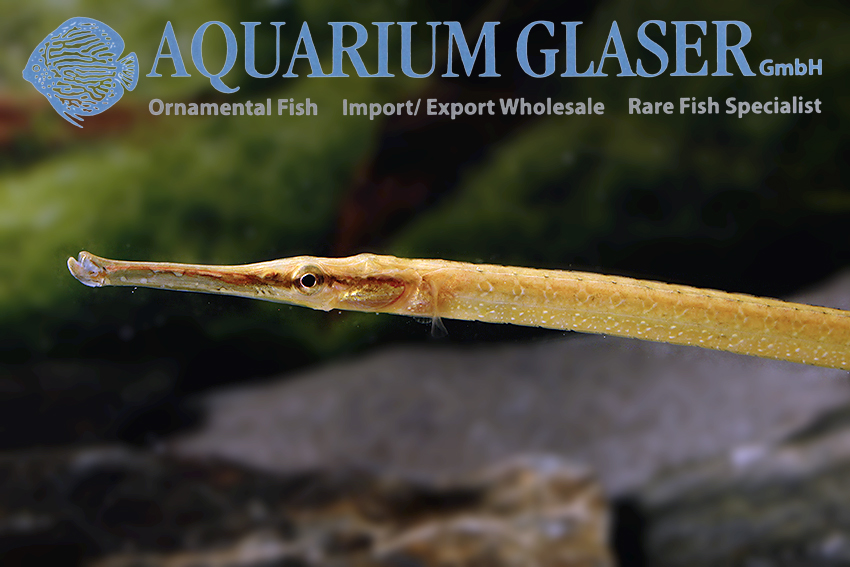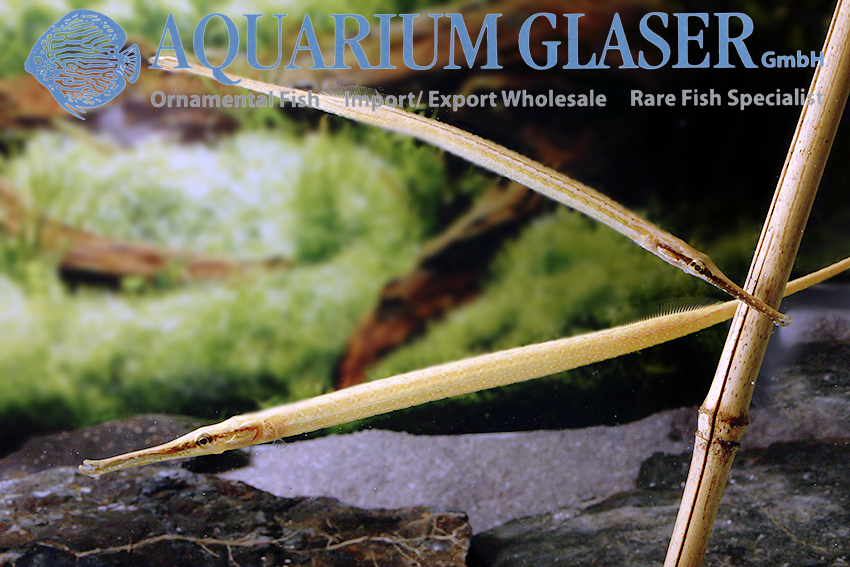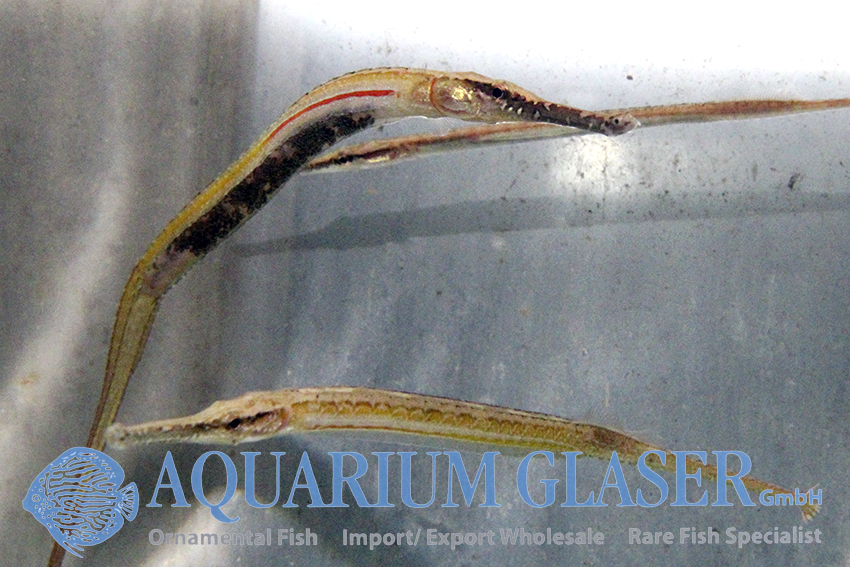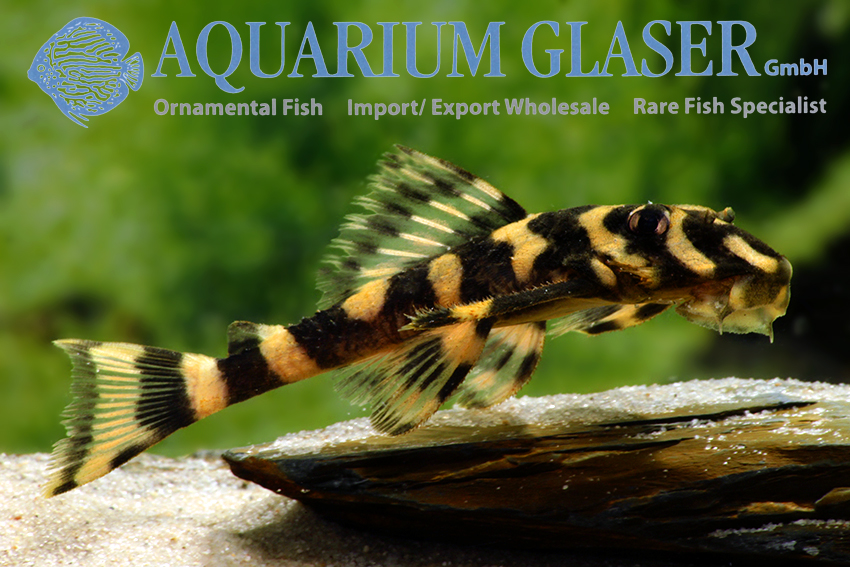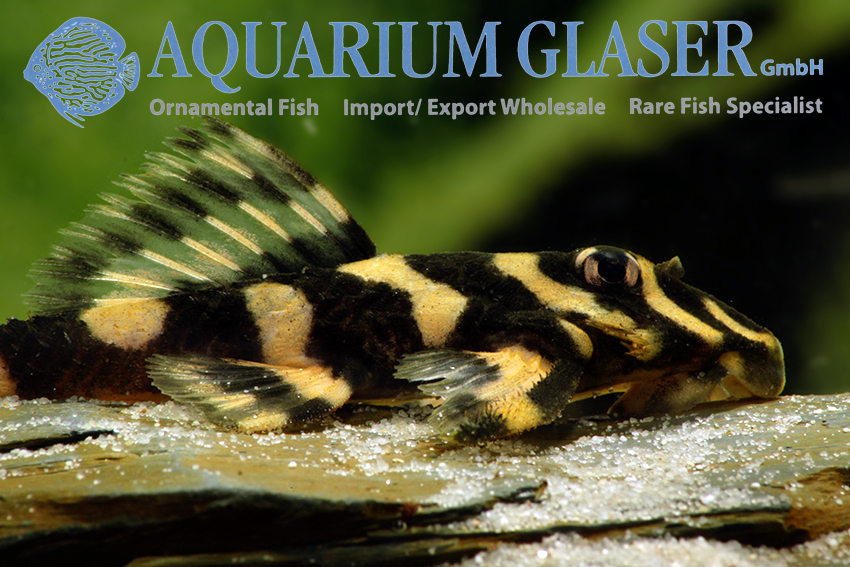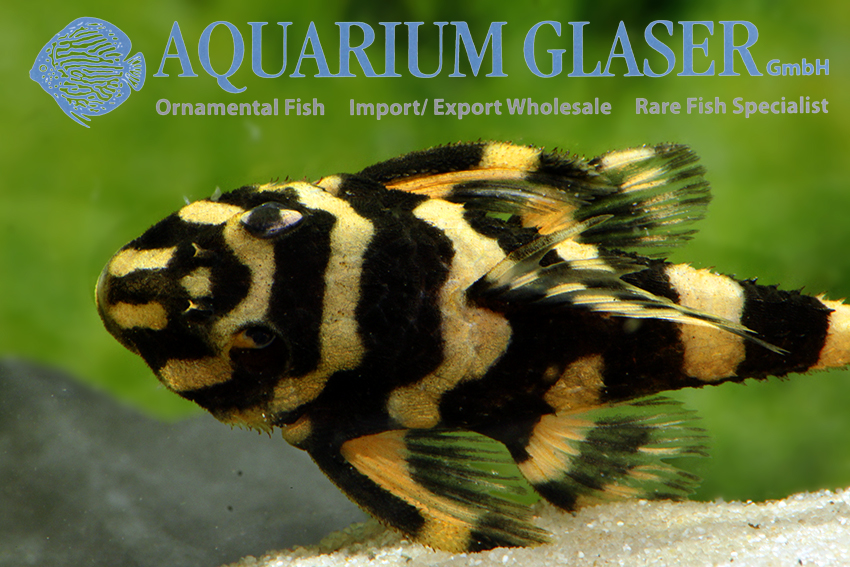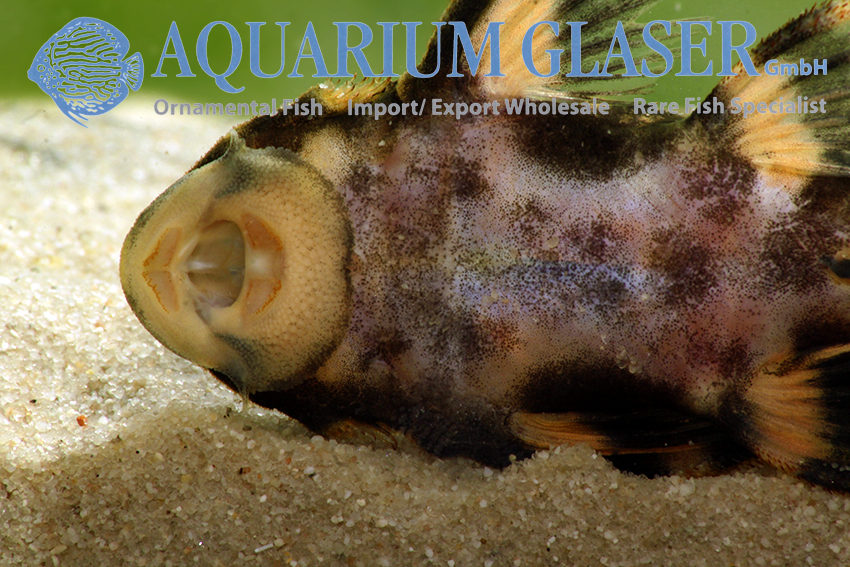The short-tailed freshwater pipefish (Microphis brachyurus) has been described from Indonesia. For a long time it was believed to be a species with a worldwide distribution, which differed only slightly at the subspecies level in the various distribution areas. And so M. lineatus (code 430104 on our stocklist) and M. aculeatus (code 149104) were considered as subspecies of M. brachyurus for a long time. Today all three are considered as independent species.
As an adult animal M. brachyurus lives in freshwater, where the tiny young are born. However, these drift into the sea within 2-3 days, where they live for some time in plankton, until they migrate back into freshwater. The breeding in freshwater has not yet been successful – as far as we know.
Some specimens of M. brachyurus have a deep red stripe on the front third of the body. It is unknown what this stripe, which can occur in both sexes, means. The males can be easily recognized by the brood pouch on their stomach.
In our current import we could observe males during courtship. The snout and the brood pouch turn deep black in a flash. Just as fast the male can switch off the black color again.
For our customers: M. brachyurus has code 430115 on our stocklist. Please note that we only supply the wholesale trade.
Text & Photos: Frank Schäfer






